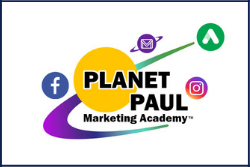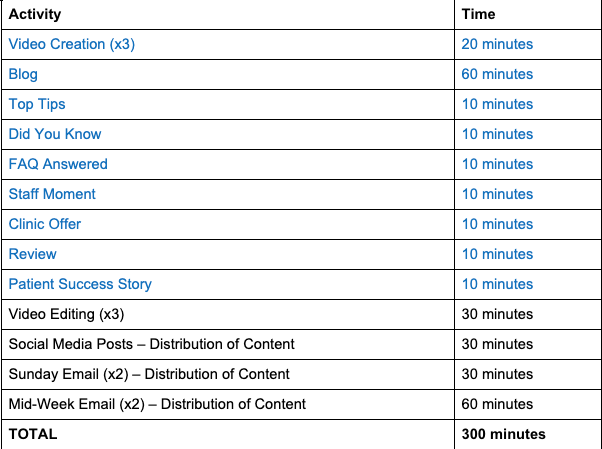FROM THE DESK OF LESTER KITCHING: (The Head of my Physio Rooms Marketing and a Specialist in CMO)
I want to share a little story that I thought highlights the importance of focusing on a variety of marketing spokes, and not just being tunnel vision with paid ads, such as Google.
When my wife was pregnant, and we were getting close to the due date, we decided that we wanted to do a maternity shoot.
So, we did what I imagine 99% of people do, and headed to Google.
Google Ads got this business; Jen Hart was at the top so I went on there first.
But I also looked at 5 or 6 other websites. The Google Ads gave the business the best chance, but actually, I still considered the others.
If you are selling a generic product that can be bought from many other places, and it’s relatively low-cost, maybe being top on Google will be enough.
But if you are selling a relatively bespoke service, it’s going to vary from place to place and it’s a high-value service, then even if you are winning the Google race, that won’t be enough to guarantee the lead/sale.
The business I opted for didn’t appear on the three Google search maps but did:
- Appear on the organic searches
- Had specific pages for the service I wanted (and others)
- Blog establishing authority
- Social media links and testimonial video
- Active LinkedIn, Facebook, and Instagram accounts
- More information than the audience would want to know (about the studio, and the photo styles)
- Email newsletters opt-in
All of these things gave me a reason to pick this business and gave me reasons to discriminate in their favour (one of Paul’s favourite sayings).
The other pages I looked at didn’t have maternity-specific pages or many details on them at all, but when I checked Jen’s page, it had a specific maternity page.
When I checked the others, if they didn’t have a specific page for maternity shoots, I didn’t even bother reading anymore because they weren’t relevant.
If a few other websites had maternity-specific pages, I would have looked more into their social media channels, read more into the reviews, and done more fact-finding until I got a place where I knew it was the best choice to take the next step (a call).
One more thing to add, this is how the business would track the lead.
Now, I’m not a Google Ads expert by any stretch of the imagination, but because I went to the site through the Google Ad, the business might look at this and say “Great, a Google Ad lead”…
But actually, the psychology behind my purchase is far more complex…
Because without the blogs, the social media channels, the specific pages, the reviews/testimonials, email newsletter, I might not have decided to go with this business.
I thought that was a good story, which shows the importance of a variety of marketing spokes.
Day To Day Content
Just for some context, I wanted to clarify how our marketing team works.
I work on the marketing for Physio Rooms, as well as Paul’s PMC, and spend the rest of my week on the Sherpa programme.
So I have about 12 hours each week to do work for the Paul Gough Physio Rooms, and that includes reporting and meetings.
Nick has moved into helping with the marketing for around 8-12 hours per week, and he also works on many things within the media business such as the Planet Paul magazine.
So, we understand the challenges you are facing with finding time for content creation amongst other things.
This is a framework of how we, at the Paul Gough Physio Rooms, create and distribute the day-to-day content that goes across a variety of marketing spokes such as:
- Website
- Emails
- Social media (Facebook, LinkedIn, Instagram)
- Google My Business
We would define the day-to-day content as things that we need to do regularly.
However, remember that you can (and should) also re-purpose older content to save time.
At least 50% of the content you create will be evergreen and usable at a later date… ‘Top tips to easing back pain at night’ will be the same in a year as it is now.
So, you could reduce your content creation even more by using older content mixed in with the new content.
Project Work
The rest of marketing time can be spent on project work such as:
- Building nurture sequences
- Creating shock and awe packages
- Forming strategic partnerships
- Creating materials for campaigns (posters, referral tickets, etc.)
- 9-word emails
- Website improvements
- Paid ads
- Organizing a workshop
Even project pieces wouldn’t necessarily be created or worked on every week or even every month.
For example, once your email nurture sequence is set up, you might not need to work on it for the next 6 months.
Another example would be website updates/improvements – once you’ve created a specific page for a problem (such as running injuries if that’s your niche), then you might not need to work on that for the next three years if it’s performing well.
What If I Don’t Have 5 Hours?!
For pillar content, repost a blog that you created before, and create videos that relate to that broader topic.
For micro-content, just create one of the three examples, and pull the micro from the blog (there must be some tips, some did you know style content, or some questions inside the blog).
For other content, maybe you just write a staff spotlight, repost an old review, and then repost your clinic offer from the previous week.
You don’t have to create everything from scratch, and you don’t have to create enough content to be posting twice a day on social.
PGPR (Paul Gough Physio Rooms) Capacity Targets
We decided to help get clarity on content creation so that we would create a high, and low-capacity framework to aim for.
If one of us is on annual leave, or we have to allocate more time to one of Paul’s other businesses leaving us less time for Physio Rooms, we can target the low capacity list.
So we might write a blog per fortnight and do 1-3 videos per fortnight.
We might just post on social 2 or 3 times per week, and GMB once per fortnight.
This isn’t going to harm the business, as we are still showing up across these marketing spokes, it’s just being posted a little bit less often.
Now if the whole team is in then we have lots of capacity for Physio Rooms work, then we might push for the high-capacity targets.
Actionable Items
Plan time in your calendar to create day-to-day content and commit to it (if you don’t plan time to do something, chances are you won’t get around to it)
Only plan a portion of your marketing time for day-to-day content – The project work is important too.
Within that time, complete the content that you can, and then move on to project work.
We gather and create content for both businesses on Wednesday and Thursday, so we give it about 5-10 hours depending on our capacity. The rest of the week is to try and get project work done because if we spend all week creating the day-to-day content, we aren’t doing the growth work that will get us to the next level.
- Spend 15 minutes creating an overview of what type of content you will create
It can be helpful to sit down to create your content with a list of options and a plan. Having some clarity, will remove uncertainty and procrastination and enable you to be efficient with content creation.
We have a content plan that I draft up every Monday so we know what we will gather and create on Wednesday and Thursday.
- If you are struggling to create, switch the type of content and start there.
Get writer’s block when trying to write a blog?
Grab your phone, put it in selfie mood, and shoot some videos with some tips. Once you’ve got that, there is your pillar content.
Struggling with designing graphics in Canva?
Got to fiverr.com and get some templates made or get to graphics later and just post the text across social.
The main thing, if you’re stuck, is to just get the ball rolling and go with that.
In that scenario, once you’ve got the videos down, you can compile the tips for this into a blog post.
Remember, it doesn’t have to be insanely original content every single time.
One final thing to remember is to take the pressure off yourself when creating content.
At the basic level…
For social media, you just want to post something so people know you are still open.
For your website, just having blogs will help you stand out a little from the competition.
For your emails, the fact you send any will separate you.
Of course, you want them to be the best that they can be, but realistically, a tips video, a blog or a graphic is only ever going to move the needle 1%…
No matter how good a video you post on Facebook, no one is going to see that, having never heard of you before, and decide to buy immediately. It won’t get anyone to go from 0 -100.
Now, over time, it will. But that’s why you need to approach this with patience.
What you want to think about is each post, each email, and each blog, is nudging the audience closer to calling you, or filling in your inquiry form.
It’s just about nudging the needle a fraction regularly.
—
Marketing Ideas for Physical Therapists
 As a member of Planet Paul Marketing Academy, you’ll have access to $10,000 worth of “what’s working now” marketing ideas – every 30 days.
As a member of Planet Paul Marketing Academy, you’ll have access to $10,000 worth of “what’s working now” marketing ideas – every 30 days.
Do you struggle to know the best way to market your clinic? Marketing ideas and strategies change on a regular basis and it can be a full-time job just to keep up with the most up-to-date strategies that will bring in the most leads. As a member of Paul’s “Marketing Academy” program, you will have real-time access to what the most successful Physical Therapy Clinics are doing right now to bring in around 20 new leads per month and increase their revenue by thousands.
Have access to your own personal coach, a private member’s website with other successful PT Business Owners, monthly group coaching calls, and a monthly “Planet Paul” marketing publication.
Get INSTANT access to $2,000 worth of wealth marketing DVD Program for Just $4.99 to cover shipping when you start your 30-day trial of the “Planet Paul Marketing Academy” Program.

